05/052011 – South Korea is an attractive defense market due to its large economy and justifiable need for military equipment to defend against a North Korean threat. The United States is the main supplier of imported weapons to the Republic of Korea Armed Forces (ROKAF). The ROK bought almost one billion dollars worth of U.S. arms in FY2010.
Yet, in addition to European defense companies, Russia also has sold the ROK many weapons and will likely continue to do so. In addition to oil and gas, weapons represent one of the few items that South Korea can logically purchase to help balance its own high-technology exports to Russia. Meanwhile, despite common misconceptions, Russia no longer sells weapons to North Korea.
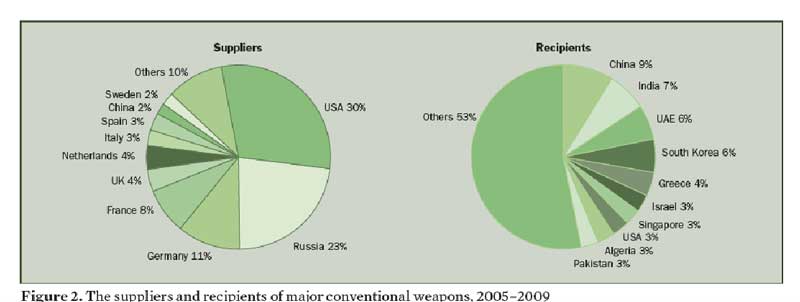 (Credit: http://www.sipri.org/databases/armstransfers/recent_trends/SIPRI_AT_Fact%20Sheet_2010)
(Credit: http://www.sipri.org/databases/armstransfers/recent_trends/SIPRI_AT_Fact%20Sheet_2010)
The Russian-South Korean defense trade arose after the Cold War. The Russian Federation began supplying tanks, combat vehicles, military helicopters, and other defense equipment to the South Korean armed forces as partial payment of the $2 billion debt to the ROK that Russia inherited from the former Soviet Union.
The debt originated in 1991, when the Roh Tae-woo administration extended $1 billion in bank loans and a $470 million commodities loan as a reward for Moscow’s recognition of the ROK government the previous year. The subsequent collapse of the Soviet Union and the impoverishment of the new Russian Federation made it impossible for Moscow to repay the loans in cash.
The first two so-called “Brown Bear” arms-for-debt swap deals were negotiated in 1995 and 2003. Under their terms, Russia provided the ROK armed forces with Soviet-era T-80U main battle tanks, METIS-M anti-tank missiles, BMP infantry fighting vehicles, Kamov Ka-32 transport helicopters, and Murena-E hovercraft. Although South Korea had originally planned to purchase 80 tanks, the ROK ended up buying only 35 T-80U tanks. South Korea also received 70 BMP-3 Infantry Fighting Vehicles from Russia. The Republic of Korea Army (ROKA) uses these Soviet-era weapons primarily to simulate a North Korean opposing force in training exercises. Ironically, the T-80U and BMP-3 are more advanced than their DPRK counterparts. North Korea’s most advanced main battle tank is the ‘Pokpung-Ho’ (Storm), which is believed to be based on the Soviet-built T-62 tank. The DPRK’s main infantry fighting vehicle is the BMP-1 IFV, which is 20 years older than the models Russia sold South Korea.
The ROKA has no need to incorporate these Soviet-made tanks and infantry fighting vehicles into its regular order of battle since the ROK Armed Forces possess more than 1,500 domestically manufactured K-1 and K-2 main battle tanks and hundreds of ROK-made K21 Infantry Fighting Vehicles.
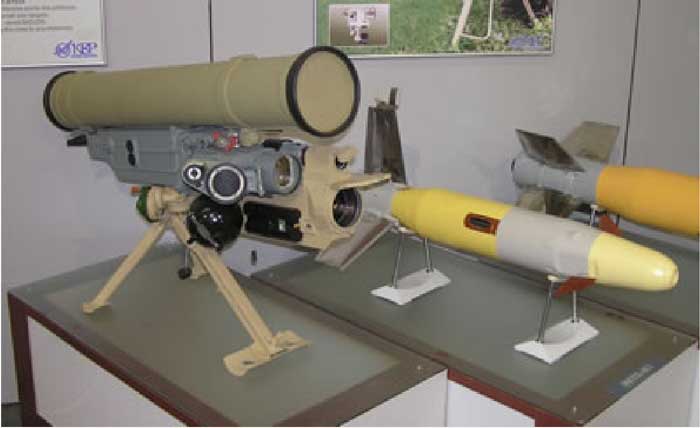
In contrast, the Igla Man Portable Air Defense Systems (MANPADS) as well as the short-range portable Metis-M antitank missiles have entered into regular service with the ROKA. The capabilities of these two Russian imports are closer to these of the infantry-launched guided missiles the ROKA has acquired from the United States and ROK domestic suppliers.
As part of the “Brown Bear” debt for weapons swap arrangements, the ROK Navy (ROKN) received seven Ka-32 transport helicopters. The Navy uses them primarily for combat search-and-rescue missions. The ROKN also bought three Project 12061 Murena E hovercraft from Russia. These craft, built at Khabarovsk, can carry payloads of 45 tons and move at a speed of 50 knots on the basis of its Zorya Mashproekt MT70 gas turbine engine and UGT 6000 turbines. The Murena E can be deployed from the ROKN’s Dokdo landing platform helicopter warships. The hovercrafts have been fitted with American-made navigation systems. Despite being less advanced than the U.S.-made LCAC, the Murena E has a potential amphibious role for transporting the Republic of Korea Marine Corps (ROKMC) in either Korean Peninsula contingencies or for overseas peacekeeping missions.
The more recent Russian weapons sales to South Korea look to deviate from this model. Instead of another arms-for-debt swap, South Korea is interested in buying Russian defense items outright, with new money.
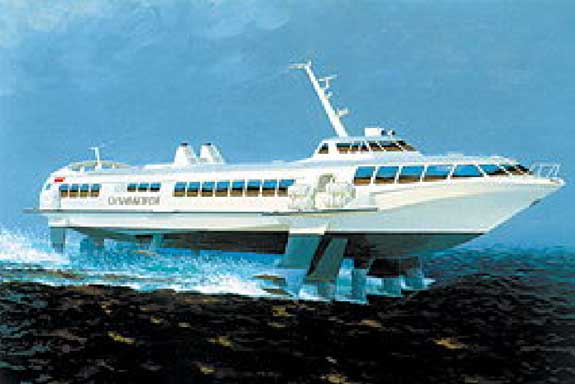 Murena E (Credit: http://gov.khabkrai.ru/invest2.nsf/Images/Export/$FILE/Olimpia.jpg)
Murena E (Credit: http://gov.khabkrai.ru/invest2.nsf/Images/Export/$FILE/Olimpia.jpg)
In addition, the ROK no longer wants to purchase mostly complete and somewhat dated turn-key weapons systems. Instead, South Korea aims to acquire some of Russia’s most sophisticated military equipment and technologies, which can then be incorporated as elements and subsystems into ROK-built platforms.
For example, since 2007, the ROK has been discussing the possible purchase of Russian-made submarine fuel cells, long-range radar systems, and technologies designed to defend electronics against an electromagnetic pulse (EMP). Meanwhile, Russia has agreed to repay its remaining $1.3 billion debt in cash rather than in kind over the next decade.
The reason for Seoul’s new defense technology sourcing strategy regarding Russia is that, as in China, South Korea’s own domestic defense industry has improved to the point that ROK firms can often research, develop, and manufacture weapons systems as good as those available from Russian defense exporters.
The ROK defense industry has benefited from an infusion of financial resources, human talent, and dual-use technologies derived from South Korea’s strong civilian industries. The ROK boasts world class and internationally competitive shipbuilding, automobile, and aerospace companies.
Furthermore, the ROK government has sought to develop the country’s defense sector through various programs and legislation. For example, the Defense Reform 2020 legislation seeks to help develop the ROK’s indigenous capabilities by increasing the percentage of funds allocated to defense research and development.
In addition, acquiring some Russian systems would create more problems than they are worth. Russian weapons systems like the Mi-28N Havoc attack helicopter and Su-30MK Flanker strike fighter are incompatible with South Korea’s NATO-standard arsenal.
The ROK aims for strong joint service and multinational interoperability with Western partners in its weapons purchases. The ROK government lobbied hard to secure recent approval in the U.S. Congress for an elevation of South Korea’s status to that of a NATO Plus Four category ally for U.S. arms purchases, a step above the more common Major Non-NATO Ally category.
Another limit on ROK purchases of complete Russian weapons systems is that Russia’s arms industry has yet to overcome some of the major difficulties it has experienced since the disintegration of the integrated Soviet military-industrial complex. Although Russian firms can manufacture good subsystems, the fielding of complex integrated weapons systems like aircraft carriers and submarine-launched ballistic missiles has proven especially problematic.
Russian defense firms found it extraordinary difficult to manage the transition from the Soviet command economy to a post-Soviet environment characterized by considerably reduced domestic defense demand and the widespread prevalence of free-market conditions in which defense companies find themselves competing with other Russian firms for orders, supplies, and human resources.
Bad government and industry practices have compounded the problem by making it difficult to implement plans to manufacture large numbers of advanced conventional weapons. The country’s military-industrial sector still suffers from limited domestic orders and extensive overcapacity. Purchases for the Russian Army and Navy have been increasing, but they have not been able to sustain all of Russia’s military production capacity.
Russia’s military manufacturing facilities also desperately require modernization. The deep nature of these problems has recently led the Russian government to buy some of the most complex and sophisticated major conventional weapons systems from foreign countries, including large Mistral-class amphibious assault ships from France and unmanned aerial vehicles from Israel.
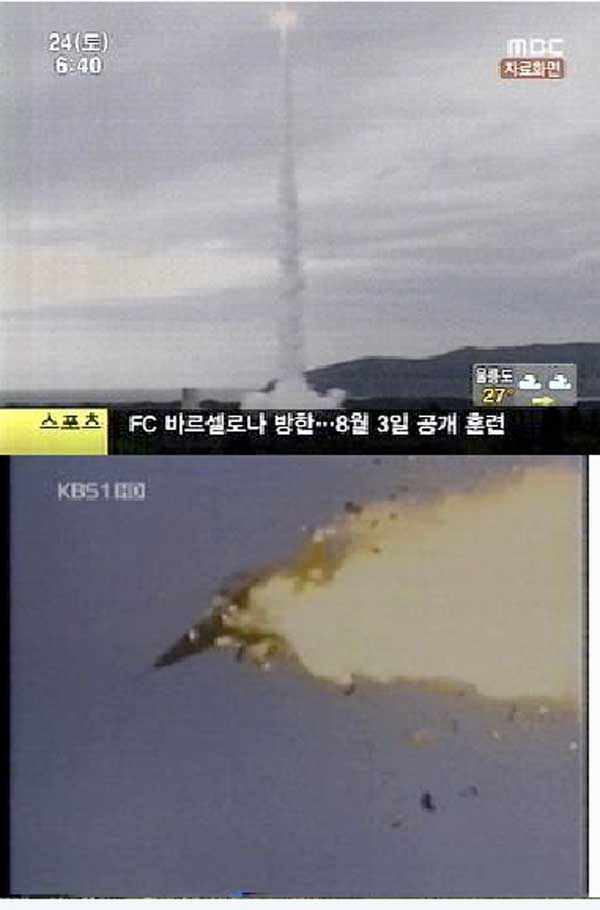
ROK defense firms are also incorporating Russia’s traditionally leading-edge surface-to-air missile (SAM) technologies into their own systems. Samsung Thales, a joint venture between the ROK heavy industry conglomerate Samsung Group and French electronics defense contractor Thales Group, is developing a medium-to-long range surface-to-air missile, the M-SAM Cheolmae-2, for the ROK military. The system is designed to engage both ballistic missiles and aircraft. The M-SAM will use S-400 missile technology provided from the Almaz Antey Joint Stock Company, including proprietary information from the S-400’s multifunction X-band radar. LG Corp’s missiles’ guidance systems are expected to also use Russian design elements.
As in other cases, Russia’s armed sales policy regarding the Koreas could conflict with its political-military strategy for the region. The immediate purpose of South Korea’s missile defense systems is to counter the several hundred short-range ballistic missiles North Korea has aimed at Seoul and Pusan, South Korea’s two largest cities.
The Russian government has no objection to the ROK’s using Russian and other air defense technologies to counter this threat. When the DPRK made evident preparations to resume missile testing in early 2009, the Russian military itself announced that it had deployed advanced missile defenses nearby to counter any DPRK missiles heading toward Russian territory, including the S-400, the most advanced SAM in use by the Russian armed forces. President Dmitry Medvedev has cited North Korea’s missile launches as well as its nuclear weapons tests as a “concern for us” given that, “We are located in close proximity to this country.”
But South Korea’s close alliance with the United States means that ROK missile defenses could also help defend U.S. forces in South Korea and perhaps elsewhere from missile attack. Russia’s main concern is probably that the ROK will seek to integrate its missile defenses with those of the United States and Japan.
The North Koreans would likely respond by further expanding their own missile arsenal, which in turn could threaten Russia directly, through an errant missile launch landing on Russian territory, and indirectly, by leading to further missile defense cooperation between the United States and its East Asian allies.
The resulting missile defense network could then help counter the offensive missile forces of China and Russia. Foreign Minister Sergey Lavrov made these Russian concerns evident when he visited Seoul in April 2009, telling the media that, “I hope that no one would … use the situation around North Korea to set up alliances, build missile defense networks or announce an intention to possess nuclear weapons.”
The benefits from this increased defense cooperation could also be used to increase the capacity of the U.S. ballistic missile defense systems planned for deployment in Europe. Although NATO and Russia have formally agreed to consider collaborating on missile defense, many Russian policy makers still worry that the U.S. missile defense systems in Europe can be used to degrade the credibility of Russia’s nuclear deterrent.
Another Russian concern is that South Korea is seeking U.S. permission and assistance to develop and deploy its own strike weapons, including a longer-range ballistic missile that could reach targets in Russia as well as China and North Korea. Currently an agreement with the United States prevents the ROK from deploying ballistic missiles with ranges longer than 300 kilometers or with a payload greater than 500 kilograms.
South Korean officials are now seeking permission to deploy ballistic missiles with a range of 1,000 kilometers and a payload ceiling of 1 ton. Although relations between Russia and South Korea are currently their best in history, Russian defense planners would need to consider the increased threat to the Russian Far East should they ever deteriorate again. Indeed, the military technology South Korea has recently been seeking and acquiring from Russia indicates Seoul’s interest in developing its power projection capabilities
Since South Korea has attained the capacity to manufacture armored vehicles, artillery systems, and other basic weapon and communications systems, and since Russia’s shipbuilding capabilities have deteriorated, ROK military leaders will likely be most interested in purchasing Russian niche capabilities in the areas of heavy transport aircraft and air defense systems.
Ambitious Russian development projects like the 5th generation PAK-FA fighter are not suitable for South Korea’s expeditionary ambitions because of they are unlikely to be interoperable with the armed forces of the United States and key U.S. allies, with which any regional ROKAF deployment would have to operate.
As part of its developing power projection capacity, South Korea might resume purchasing select turn-key Russian weapon systems, in this case a Russian-made heavy transport aircraft. For example, the Antonov An-124-100M-150 is capable of carrying a 120-ton payload for more than 5,000 kilometers in its 36m X 6.4m X 4.4m cargo compartment. Chartered An-124s has already been heavily used by the NATO-led International Security Assistance Force (ISAF) in Afghanistan. U.S. forces in Iraq also have employed the Antonov An-124 to carry outsized payloads like self-propelled artillery and MRAP vehicles
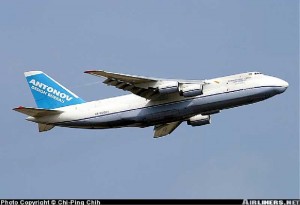
To improve performance in areas like navigation and make the planes more interoperable with NATO, South Korea is likely to modify any Russian military transport planes it purchases by equipping them with Western avionics.
The Russian-ROK arms trade first arose as a logical means to liquidate a Cold War-era monetary debt. It has since developed as a means for the ROK to acquire certain niche capabilities. Two other considerations that might also lead to further South Korean purchases of Russian weapons could include a desire to gain negotiating leverage with other foreign arms suppliers and an incentive to help sustain good relations between Russia and the ROK, especially in the complex negotiations with Pyongyang.

